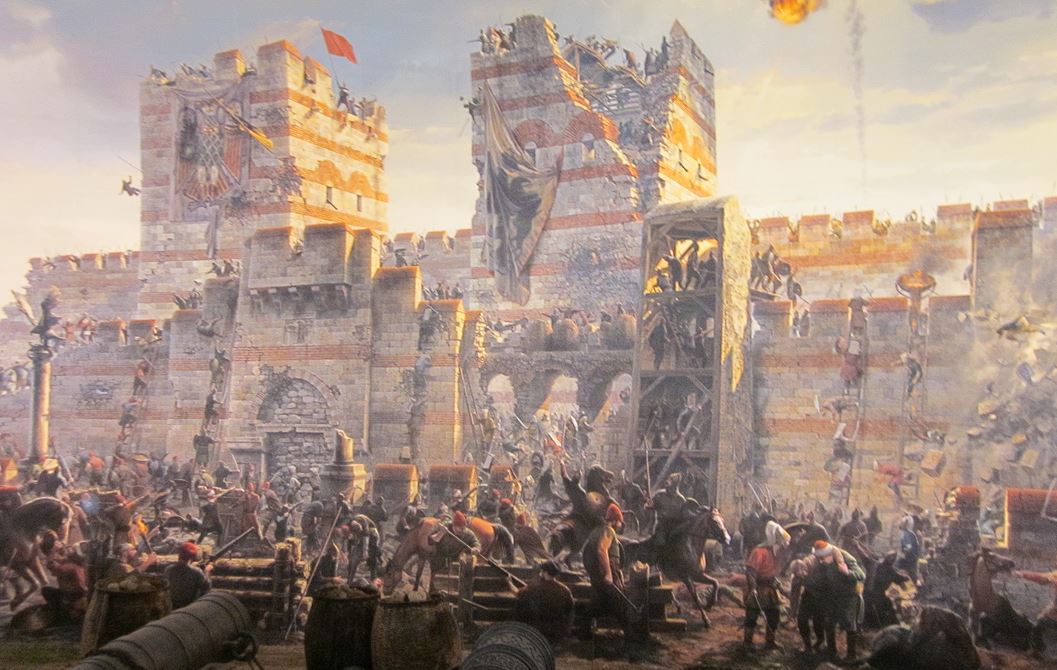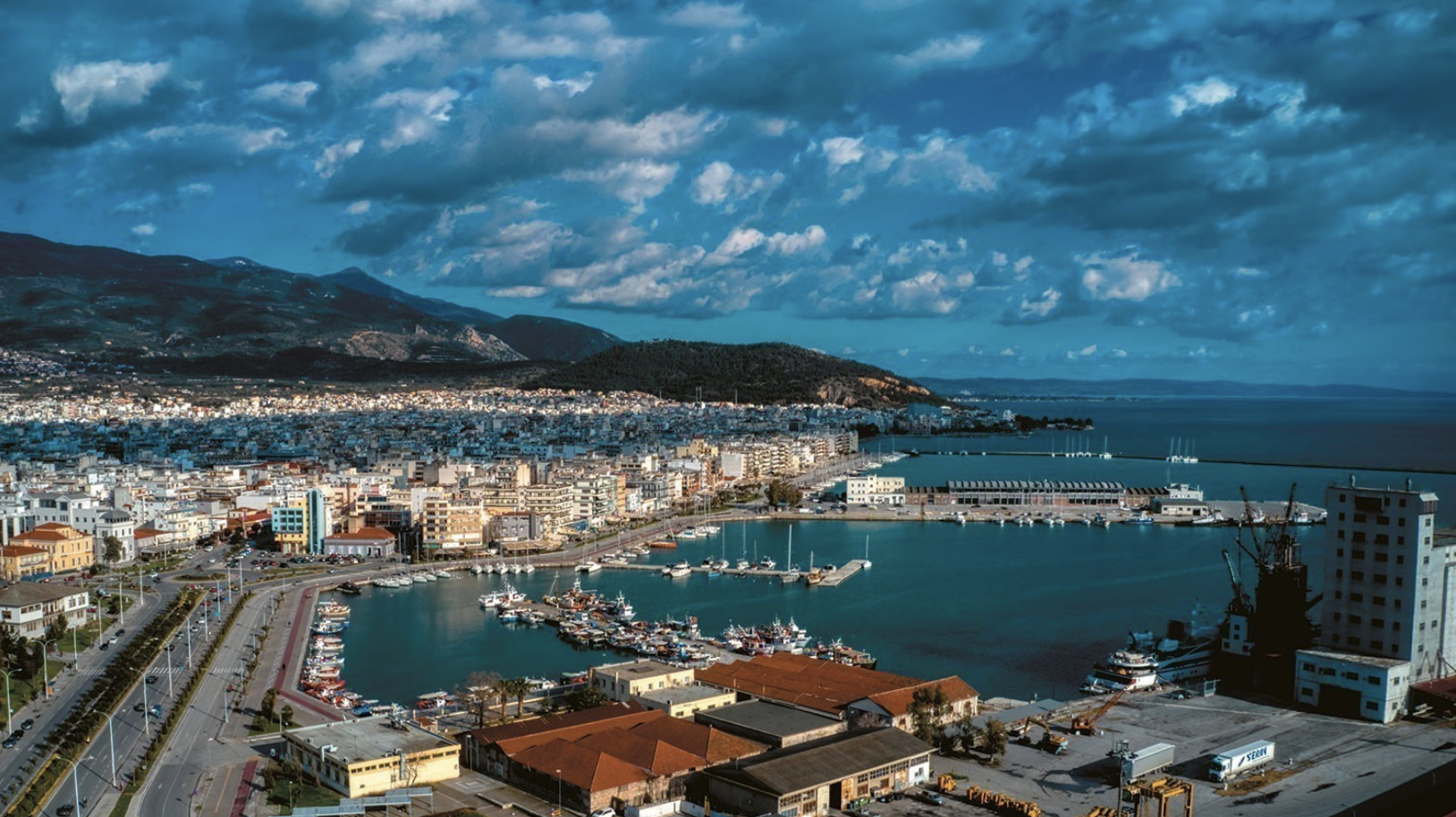570 years ago this day on May 29th, 1453 the second capital of the Roman Empire located in the Bosporus Straits, Constantinople fell to the Ottoman Turks marking the end of the longest-enduring empire in human history. It was a watershed moment in history, as the dwindling Byzantine Empire came to an end when the Ottomans breached Constantinople’s ancient land wall after besieging the city for 55 days.
Mehmed surrounded Constantinople from land and sea while employing cannons to maintain a constant barrage of the city’s formidable walls. The fall of the city removed what was once a powerful defence for Christian Europe against Muslim invasion, allowing for uninterrupted Ottoman expansion into Eastern Europe.
Constantinople’s walls were widely recognized as the most formidable in all of Europe. The land walls spanned 4 miles (6.5 km) and consisted of a double line of ramparts with a moat on the outside; the higher of the two stood as high as 40 feet (12 metres) with a base as much as 16 feet (5 metres) thick. These walls had never been breached in the thousand years since their construction. An adjoining sea wall ran along the Golden Horn and the Sea of Marmara, the latter section being 20 feet (6 metres) high and 5 miles (8 km) long.
When combined with a large metal chain that had been drawn across the Golden Horn, Constantine was confident that the city’s defenses could repel a naval assault and withstand Mehmed’s land forces until relief came from Christian Europe. However, Constantine’s capacity to defend his city was hampered by his small fighting force. Eyewitness Jacopo Tedaldi estimates a presence of 30,000 to 35,000 armed civilians and only 6,000 to 7,000 trained soldiers. Giustiniani intended to concentrate most of these men at the land walls to the north and west, the centre of which he observed to be the most vulnerable section of the city. A small fleet of naval and armed merchant vessels was also stationed in the Golden Horn to defend the chain. However, without outside support, Constantinople’s defenders would be spread thin.
The Ottoman besiegers vastly outnumbered the Byzantines and their allies. Between 60,000 and 80,000 soldiers fought on land, accompanied by 69 cannon. Baltaoğlu Süleyman Bey commanded a fleet stationed at Diplokionion with an estimated 31 large and midsize warships alongside nearly 100 smaller boats and transports. Mehmed’s strategy was straightforward: he would use his fleet and siege lines to blockade Constantinople on all sides while relentlessly battering the walls of the city with cannon. He hoped to breach them or otherwise force a surrender before a Christian relief force could arrive.
On April 6 the Ottomans began their artillery barrage and brought down a section of the wall. They mounted a frontal assault of the land walls on April 7, but the Byzantines repelled them and were able to repair the defenses. After pausing to reposition his cannon, Mehmed reopened fire and thereafter maintained daily bombardment.
On April 12 the sultan dispatched a contingent of troops to subdue two nearby Byzantine forts and ordered Baltaoğlu to rush the chain. The fleet was twice driven back, and Baltaoğlu retreated to Diplokionion until the night of the 17th, when he moved to capture the Princes Islands southeast of the city at the same time that Mehmed’s land regiments assaulted the Mesoteichon section of the wall. Constantinople’s defenders once again held their ground, however, and Baltaoğlu’s success at the islands was irreparably marred by the revelation that three relief ships from the pope and one large Byzantine vessel had nearly reached the city unhindered. The Ottoman galleys were too short to capture the tall European warships, and, with the help of the Golden Horn fleet, the warships safely sailed past the chain. Upon hearing of his navy’s defeat, Mehmed stripped Baltaoğlu of his rank and arranged for his replacement.
Mehmed was determined to take the Golden Horn and pressure the Byzantines into submission. He angled one of his cannons such that it could strike the defenders of the chain and then began to construct an oiled wooden ramp upon which he intended to portage his smaller vessels from the Bosporus to the Golden Horn. By April 22 the ships had circumvented the chain in this way and, barring the chain itself, seized control of all the waters surrounding the city. The defenders attempted to attack the remainder of the Ottoman fleet in the Bosporus, but they were defeated.
Having encircled Constantinople in full, Mehmed continued his artillery barrage of the land walls through May 29. The Ottoman cannon created several breaches, but most were too narrow to send troops through. The city’s defenders continued to repair the walls at night and reinforced areas at the damaged Gate of St. Romanus and the Blachernae sector. In the early hours of May 29, Ottoman labourers filled the moat surrounding the city. Just before dawn, the sultan launched a coordinated artillery, infantry, and naval assault on Constantinople. Two attempts to rush the Gate of St. Romanus and the Blachernae walls were met with fierce resistance, and the Ottoman soldiers were forced to fall back. Mehmed ordered a third attack on the gate, this time with one of his own palace regiments of 3,000 Janissaries. A small group reached the top of a tower through another gate but were nearly eliminated by the defenders until Giustiniani was mortally wounded by Ottoman gunfire while on the ramparts. He was carried to the rear, and his absence sowed confusion and lowered morale among the ranks. This allowed the sultan to send in another Janissary regiment and take the inner wall at the Gate of St. Romanus.
A rout of the defenders ensued, with many of the Venetian and Genoese fighters retreating to their ships in the Golden Horn. Emperor Constantine XI is reported to have been killed while either fighting near the breach or fleeing to an escape boat. Although the sultan attempted to prevent a total sack of the city, he permitted an initial period of looting that saw the destruction of many Orthodox churches. When most of Constantinople was secure, Mehmed himself rode through the streets of the city to the great cathedral of Hagia Sophia, the largest in all of Christendom, and converted it into the mosque Ayasofya. He stopped to pray and then demanded that all further looting cease immediately. The sultan thus completed his conquest of the Byzantine capital.
source britannica.com
Ask me anything
Explore related questions





